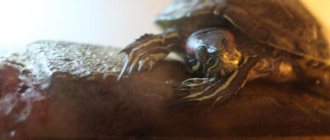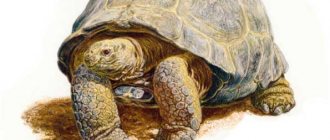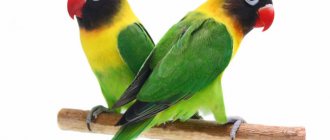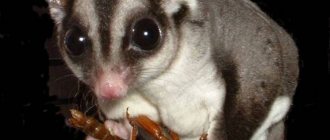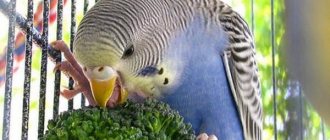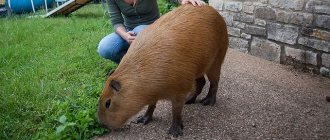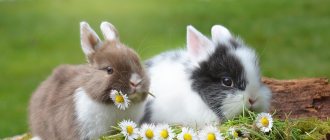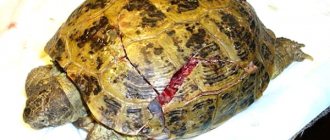Raccoons do not like frosty and snowy weather. With the onset of winter cold, charming animals with striped tails slowly and smoothly plunge into suspended animation. Sensing frosts and snow blizzards, the raccoon goes into hibernation. Of course, there is a difference between raccoon and raccoon. Features of the course of winter anabiosis may vary among residents of different climatic zones. I propose to talk about this topic, how a raccoon behaves during hibernation in the north, in the mid-latitudes and tropics.
Northern raccoons, greetings from the Tundra
It must be said right away that wild raccoons remain poorly studied to this day. They are incredibly difficult to track and even more difficult to observe in their natural habitat.
Raccoon researchers claim that living in the north, the raccoon goes into hibernation and sleeps soundly for 4-5 months until the snow melts. There is a direct relationship between the severity of frost and the depth of hibernation of raccoons.
The colder it is, the more soundly the animals sleep. Northern raccoons are very similar in habits to brown bears. These powerful animals hibernate with the first snows and sleep soundly until spring arrives. Raccoon hibernation lasts from mid-November to April.
Preparing for suspended animation in a northern raccoon
Northern raccoons differ from residents of warmer regions in their tendency to accumulate subcutaneous fat and create supplies for the period of hibernation. Raccoons from the northern climate zone are more well-fed. If the weight of an average raccoon from mid-latitudes ranges from 3-15 (kg), then northern raccoons weigh 7-15 (kg). The inhabitants of the north have a larger build and thicker fur.
Before a raccoon goes into hibernation, it actively gains weight. The tendency to increase subcutaneous fat is observed from the end of summer until the onset of cold weather. These animals fill their bellies to capacity. During summer and early autumn, raccoons hunt a lot. Everything comes into play:
- Insects
- Rodents
- Birds
- Reptiles
- Amphibians
- Worms
- etc.
Northern raccoons are incredibly voracious. Some scientists note that this animal has become a real threat to the extinction of many insect species.
Related material: The largest raccoon in the world
During autumn, raccoons gradually switch to food of plant origin. The main diet consists of acorns, nuts, fruits and vegetables.
Some individuals stock up on provisions for the spring. Raccoons can stock up on acorns and nuts, that is, non-perishable foods that are guaranteed to be preserved in the spring.
Raccoon sleeping at home
If a raccoon lives at home with a person, then it does not need hibernation. The temperature at home is always the same. If he wants to take a nap (instinct will take over), he will fall asleep for a maximum of a couple of weeks.
This can happen in particularly severe frosts, when it can be felt even in a warm apartment. If your raccoon falls asleep, you should never wake him up. The animal's body knows better when to sleep. You can make a “mini house” for a raccoon. Cover it with a blanket ring to make the animal more comfortable. Better yet, don't even touch it.
After a nap, you may notice your pet's slight disorientation. This can be compared to how you feel in the morning. Don't worry, it will go away in an hour or two.
But after such a “mini-hibernation” the raccoon will be active and alert for a long time. The animal stores up its strength and its body, being cleansed, becomes better and stronger. After waking up, the raccoon is usually hungry, so it is worth feeding it.
Raccoons of the middle climate zone, greetings from the USA
Animals of mid-latitudes are less prone to winter anabiosis. Do raccoons hibernate? - Yes, they do. But, an amendment needs to be made here. The depth of sleep in raccoons from this climate zone is quite superficial. There are cases when raccoons are walking around the area already in early February. That is, if the weather is sunny and windless outside, the raccoons wake up and go out to warm up.
Of course, in winter the activity of raccoons noticeably decreases. Instead of brawls and hooligan antics, raccoons lead a modest lifestyle, recovering from winter suspended animation. A raccoon that hibernates can sleep for up to 4 months in incomplete suspended animation. That is, any warming wakes up raccoons, which makes sleep shallow and too intermittent. If the winter is warm enough, raccoons may not sleep at all. In this case, hibernation will only be reminded of by a decrease in the physical activity of these animals.
Preparing for hibernation in raccoons from the middle climate zone
This region is home to average raccoons. Unlike their northern counterparts, this family of raccoons does not need to accumulate a protective layer of fat. Of course, raccoons gain weight by winter, but the volume of subcutaneous fat is incomparable with the level of fat deposits of northern raccoons. The same can be said about wool. Raccoon fur is not as thick and fluffy as that of its northern counterparts.
Raccoons in this climate zone can stock up on provisions. Acorns and nuts are found in the hollows of sleeping raccoons.
Reproduction
Raccoons breed strictly once a year, during their mating season, which occurs either at the end of winter or at the beginning of summer (depending on the raccoon’s habitat, the further south it lives, the faster its mating season begins, for raccoons living in our temperate latitudes, the mating season is in early summer).
These animals have no special mating rituals, everything is extremely simple - the male finds the female by smell and mates with her. The pregnancy of a female raccoon lasts 2 months; birth occurs in some secluded place, usually a hollow tree or an abandoned hole of another animal.
From 3 to 8 small raccoons are born at a time. Baby raccoons, like kittens, are born blind and helpless, and at first they are under the full care of their mother, who feeds them with her breast milk. But after a month of their life, they begin to grow rapidly, by 4-5 months they are already able to obtain food on their own, and by the first year, raccoons reach sexual maturity and become adults.
Tropical raccoons, greetings from Panama
Does a raccoon hibernate where warm weather prevails? – It does, but in rare cases. In regions where the temperature does not drop below +12° (C), raccoons are not prone to winter hibernation. Only a slight decrease in physical activity, which will be noticeable only to an experienced eye, reminds us of the ancient and archaic instinct of hibernation.
Related material: What to do if bitten by a raccoon?
Raccoons in this climate zone are light in weight and have light hair. If you put a northern and a tropical raccoon side by side, the difference will be enormous. In fact, the tropical raccoon has become an independent subspecies. These animals are called crustacean raccoons. Unlike the striper, the crayfish has almost smooth fur. It's all about the climate. The tropics are the warmest climate zone. There is no need to protect yourself from the cold with a layer of fat and thick wool.
Winter in the tropics is characterized by heavy rainfall. Do raccoons hibernate during weeks of heavy rain? – Scientists have not observed hibernation. The only thing is that the raccoon can simply wait out the vagaries of nature in its cozy nest. That is, during the rainy season, a raccoon can doze in the hollow of its tree, waiting for good weather.
What to feed
What to feed your pet raccoon? A partially omnivorous raccoon can be fed with the same things it has in its natural environment: these are various berries, fruits, and nuts. In addition, raccoons can be fed with specialized food for cats and dogs, but only premium food. You can give meat and fish, both raw and boiled, the main thing is not too fatty. Chicken, beef, turkey, veal and rabbit are excellent meats for raccoons. Raccoons eat excellent fruits: apples, pears, grapes, bananas, peaches, plums. Vegetables that will be useful to raccoons include: carrots, fresh peas, asparagus, and zucchini.
Features of feeding
The owner must be attentive and strict. These charming animals love to beg for various sweets and forbidden foods. You should always remember that succumbing to provocation can harm your pet. Such rewards often lead to obesity and digestive system disorders.
In raccoons, the digestive system is a weak point. Up to 1 year after each feeding, babies need to have a tummy massage. Massage ensures the passage of food through the gastrointestinal tract.
New raccoon foods should be introduced gradually. After feeding, monitor your pet’s well-being and stool. If there is no negative reaction from the body, then the product is suitable for feeding.
How much to feed
Babies under 1.5 months of age need to be fed every 3-4 hours. Adult raccoons need three meals a day. Since the peak of activity occurs at night, it is necessary to feed the raccoon in the late afternoon. Usually the first meal is before bed, the second in the evening, the third at night.
Raccoons at the age of 3 months can already be transferred to independent feeding from a bowl. From 6 months you can start introducing vegetables, berries and fruits into your diet.
A litter usually contains two to seven babies
On average, there are four cubs in a litter. At birth they usually weigh 85-140 grams. Their fur is very light and light with barely visible rings on the tail and a mask on the face. The cubs open their eyes at about three weeks of age and begin to try solid food at seven weeks of age. At two months, they already accompany their mother on her nightly forays, gradually learning to find food. By five months, raccoons are able to hunt mice or birds on their own.
Photo: Shutterstock
The young remain with their mother during the first winter and leave her the following spring (when the female is ready to breed again). Although young females sometimes remain in close proximity to their mother and may continue to live with her new litter in the same den. Young males sometimes form small bachelor groups, but in general their social structure is fairly loose with overlapping territories.
Nutrition
The main search for food among raccoons is usually concentrated around water sources. They can catch fish, arthropods, frogs and some species of turtles.
Raccoons also love turtle eggs, hamsters, muskrats and musk rats. When hunting in the forest, the animal feeds mainly on insects, larvae, earthworms, fruits, berries, nuts and bird eggs.
Some regions suffer some damage due to the fact that raccoons regularly raid chicken coops and industrial poultry farming areas.
Raccoons, being predators, are not averse to eating rabbits, snails and squirrels. However, their diet also includes numerous berries, cherries, gooseberries, grapes, vegetables, grains and much more.
Which animal does not hibernate?
Some “non-sleeping” animals are actively preparing for winter, building warm homes and collecting food in “pantries”. These include beavers, muskrats and moles. Beavers and muskrats build special insulated huts that protect them from frost, and also stock up on food in the summer.
Interesting materials:
How to check the serial number of a Gucci bag? How to check if a Megacom number is registered? How to print a receipt in Privat24 By number? What are the seat numbers on the bus? How to revive paints by numbers? How to hide your number on Yulia? How to unblock a Beeline number? How to create your own number on Skype? How to enter a number on Instagram? How to see a number in Viber?
Did you know?
- The word raccoon comes from the Native American word "powhatan", meaning "an animal that scrapes with its hands."
- Research has shown that raccoons are far superior to dogs and cats at solving mazes and have primate-level problem-solving skills.
- The lifespan of a raccoon depends on whether it lives in the wild or in captivity. Wild individuals can live 15 years, but they usually do not live past the age of five. In zoos, environmental centers, or as pets, raccoons live for 20 years.
- In the Russian Empire they were called "genots" because of their resemblance to genets, predatory mammals with long striped tails.

